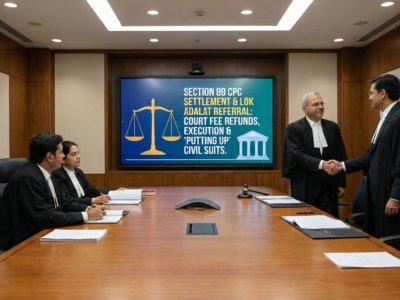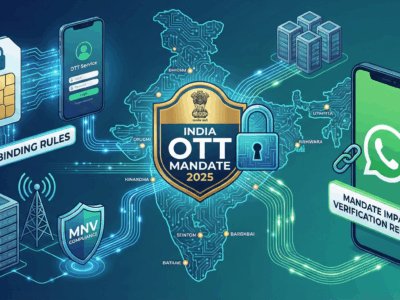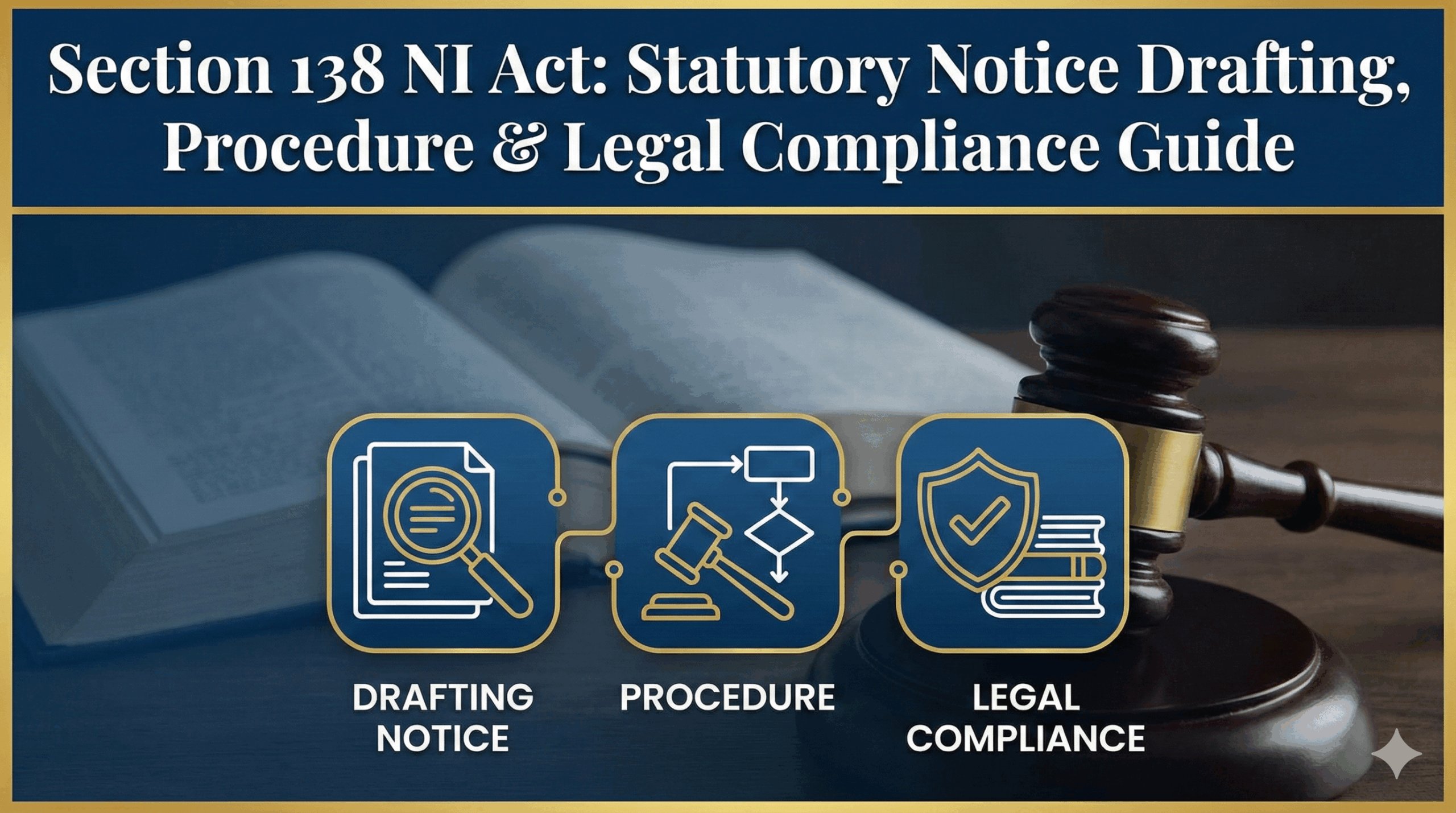Navigating the complexities of a startup is challenging, but the greatest risk often lies in the co-founder relationship. An alarming 65% of high-potential startups fail due to internal disputes, a problem that this guide is designed to solve.
I have created a comprehensive, long-form webpage to serve as the ultimate resource for Indian startup founders. It goes beyond simple explanations to provide actionable tools and deep insights. Inside, you will find:
- Interactive Tools: A dynamic equity split calculator to facilitate fair ownership discussions and a step-by-step decision tree to navigate disagreements.
- In-Depth Case Studies: A close look at the real-world fallouts at companies like Housing.com and Flipkart to learn from their mistakes.
- India-Specific Legal Analysis: A clear breakdown of what’s actually enforceable under Indian law, particularly regarding non-compete and IP protection clauses.
My goal is to equip you with the knowledge to forge a strong, resilient partnership and build a foundational agreement that protects your vision and your venture from common pitfalls.
The Co-Founder's Compact
A Definitive Guide to Founder Agreements and Dispute Avoidance. Presented by evaakil.com
The Co-Founder Failure Rate
The Funding Winter as an Accelerant
Recent capital scarcity in the Indian startup ecosystem hasn't created founder disputes, but it has brought them to a breaking point. Easy money can mask misalignments in vision or strategy. When cash is tight, tough decisions about pivots, budgets, and profitability must be made, exposing any cracks in the founding team's foundation.
Anatomy of a Bulletproof Founder's Agreement
A well-drafted agreement is your startup's constitution. It transforms ambiguous assumptions into explicit commitments. The very process of drafting it forces critical conversations when alignment is highest. For enforceability in India, it must be printed on non-judicial stamp paper and signed by all founders.
| Clause | Purpose | Key Questions to Discuss | Risk of Omission (Case Study) |
|---|---|---|---|
| Roles & Responsibilities | Prevent role ambiguity and conflict over effort. | What is each founder's title? Is commitment full-time? Are side projects allowed? Is there a critical skill gap in the team? | Resentment over unequal contributions. **(e.g., Zipcar)** |
| Decision-Making | Create a clear framework for critical decisions. | Which decisions require unanimous consent? Who has final say in a tie? What is the deadlock resolution process? | Strategic stagnation and chaos. **(e.g., Housing.com)** |
| IP Assignment | Ensure all business IP is owned by the company. | Does all new IP belong to the company? What about pre-existing IP? What about IP from contractors? | Departing founder can claim critical IP. |
| Equity Vesting & Cliff | Ensure founders earn equity over time. | What is the vesting period (standard is 4 years)? Is there a 1-year cliff (mandatory for ESOPs in India)? | Early leaver walks away with unearned equity. |
| Share Transfer (ROFR) | Control who can become a shareholder. | Must shares be offered to the company/founders first (Right of First Refusal)? | Stake sold to a competitor. **(e.g., Housing.com)** |
| Founder Exit (Involuntary) | Define a clear process for removing a founder. | What actions constitute "cause" for termination? What is the removal process? | Messy, public firing that damages reputation. **(e.g., Housing.com)** |
Equity & Vesting Demystified
Splitting equity is more than just a math problem; it's a conversation about value, risk, and commitment. A simple 50/50 split is often a mistake, failing to account for unequal contributions. Use a structured framework, and always include vesting.
Dynamic Equity Split Calculator
Rate each founder's contribution (1-10) across key areas to generate a fair, data-driven starting point for your equity discussion.
Calculated Equity Split
The Standard Vesting Schedule
Vesting ensures equity is earned, not just given. The industry standard is a 4-year period with a 1-year cliff, protecting the company if a founder leaves early.
Year 1: Cliff
25% of equity vests. No equity if you leave before this.
Protecting Your Stake
Beyond initial splits, your shareholder agreement should include clauses to protect your ownership percentage in future funding rounds.
Anti-Dilution Rights
Protects you if the company issues new shares at a lower valuation than in previous rounds.
Pro-Rata Rights
Gives you the right to buy a proportional number of shares in future rounds to maintain your ownership percentage.
Securing Your Startup's Most Valuable Asset
In the Indian legal context, your IP clause is your strongest defense. A departing founder can be prevented from using your code, brand, and data, even if they can't be prevented from competing.
The Defensive Moat
1. IP Assignment Clause
Ensures all code, designs, and business processes created for the venture belong to the company, not the individual. This is the golden rule.
2. Non-Solicitation Clause
Prevents a departing founder from poaching your employees or soliciting your clients for a reasonable period. This is generally enforceable in India.
3. Confidentiality Clause
Legally obligates all founders to protect trade secrets and data, even after they leave. This is robustly enforceable.
⚠️ The Contractor IP Trap
In India, unless a contract explicitly states otherwise, an independent contractor or freelancer retains ownership of the IP they create. Without a specific IP assignment agreement, the developer you hired could legally own your app's source code.
The Indian Legal Landscape: What's Actually Enforceable?
Not all clauses are created equal. Understanding Section 27 of the Indian Contract Act, 1872, is critical to avoid relying on clauses that are void in a court of law.
The Non-Compete Clause: A Critical Distinction
✅ Enforceable: During Employment
A clause preventing a founder from competing with the company *while they are still engaged with it* is generally considered valid and reasonable to protect business interests.
❌ Void: Post-Employment
A non-compete that restricts a founder from starting a competing business *after they leave* is overwhelmingly considered a void "restraint of trade" under Section 27 and is unenforceable.
This legal reality means your best defense is not to restrict a person's future, but to protect your company's assets with strong, enforceable IP Assignment, Non-Solicitation, and Confidentiality clauses.
War Stories from the Trenches
Learn from the high-profile fallouts that rocked the Indian startup ecosystem. Filter by the core conflict driver to see how specific failures in the founder's agreement led to disaster.
Housing.com
With 12 founders and no clear governance, the CEO acted unilaterally, leading to public spats, leaked board emails, and a mass exodus of talent after his public firing.
Key Lesson: Governance isn't optional.
Flipkart
Post-acquisition by Walmart, a clash between founder Sachin Bansal's long-term global vision and the new board's focus on short-term profits led to his unhappy exit.
Key Lesson: Anticipate investor dynamics.
Metaversity
A perfect example of failure by conflict. Despite a ready product and funding, the company imploded because its founders had irreconcilable visions for the future.
Key Lesson: A shared vision is non-negotiable.
Zomato
A series of high-profile co-founder exits post-IPO highlighted the immense challenge of maintaining alignment and culture during rapid scaling and delegation.
Key Lesson: Agreements must evolve with scale.
A Founder's Playbook for Dispute Resolution
Disagreements are inevitable. A pre-agreed process prevents them from escalating into company-killing battles. Follow this ladder, from collaboration to binding resolution.
Negotiation & Escalation
Start with direct, good-faith discussion. If that fails, escalate to a trusted advisor or board member. This is low-cost and preserves relationships.
Mediation
A neutral third-party mediator facilitates a confidential discussion to help you reach a mutual agreement. It's non-binding but highly effective.
Arbitration
A more formal process where a neutral arbitrator hears the case and issues a legally binding decision. It's private and faster than court.
Litigation
The absolute last resort. A public, expensive, and time-consuming court battle that will likely destroy the relationship and damage the company.
Deadlock "Nuclear Options"
For complete paralysis in a two-founder company, these clauses force a resolution. Use with extreme caution as they favor the more capitalized founder.
| Mechanism | How it Works | Pros | Cons |
|---|---|---|---|
| Russian Roulette | Founder A sets a price; Founder B must choose to either buy A's shares or sell their own shares at that price. | Forces a resolution; incentivizes a fair price. | Heavily disadvantages the less-capitalized founder. |
| Texas Shootout | Both founders submit a secret, sealed bid to buy out the other; the highest bidder wins and must purchase the shares. | Rapid and decisive. | Can result in a premium price; still favors the founder with more cash. |
The Founder's Toolkit
Practical tools to help you build a strong foundation. Use this interactive decision tree to navigate disagreements constructively.
Interactive Disagreement Decision Tree
A disagreement has occurred. Is this a "Key Decision" as defined in your Founder's Agreement?









